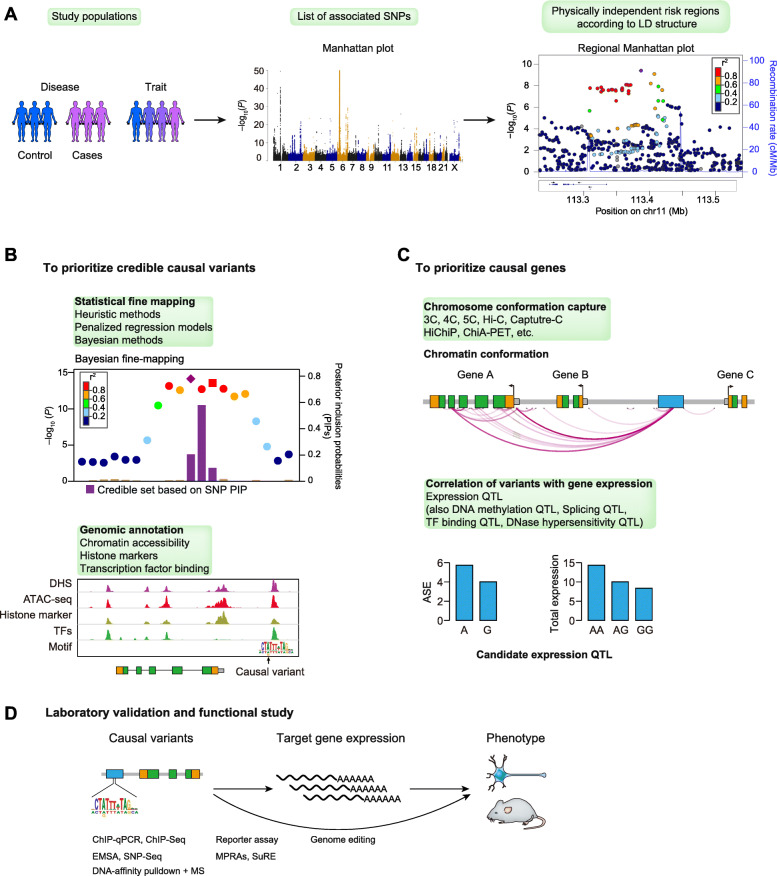Fig. 1.
Flow of a typical process from initial GWAS to functional dissection. a A typical GWAS involves selection of the study populations, either case-control cohorts or general populations; genotyping of variants across the genome by single-nucleotide polymorphism (SNP) array or whole genome sequencing; and statistical analysis of variant-trait/disease associations. Regional Manhattan plots (also termed as LocusZoom plots) are generated to show the P values of all variants in a genomic region, to explore the patterns of linkage disequilibrium (LD) between the sentinel variant and each variant, and to annotate the genes within this region. b Statistical fine-mapping and genomic annotations are used to prioritize candidate causal variants. Normally, a credible set of causal variants are prioritized according to posterior inclusion probability (PIP) of each variant and genomic annotations, including chromatin accessibility, histone markers, and transcription factor binding potential, are summarized to guide the following functional studies. c Target genes are predicted according to enhancer-target gene promoter interaction (chromatin confirmation capture) and correlation between causal variant genotypes and target gene expression. ASE, allele-specific expression. d Various experimental approaches are employed to investigate the functions of causal variants and target genes and to link them back to the original phenotype

